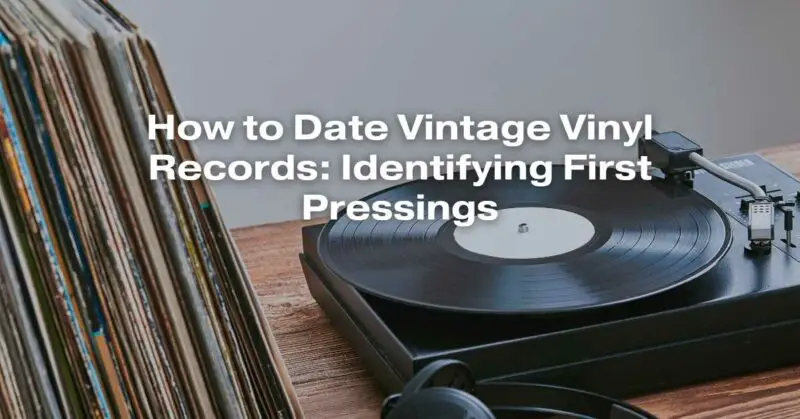Vinyl records have experienced a remarkable resurgence in popularity over the past few decades. Despite the digital age’s dominance, many audiophiles and music enthusiasts still crave the warm, analog sound of vinyl. Alongside this renewed interest in vinyl, collecting vintage records has become a passionate pursuit for many. Among collectors, first pressings are considered the holy grail, as they often offer the purest representation of an album’s original intent. In this comprehensive guide, we will delve into the art of dating vintage vinyl records by identifying first pressings.
The Allure of Vintage Vinyl
Vinyl records have a rich history dating back to the late 19th century, but their heyday in popular music spanned from the 1950s to the 1980s. During this time, records were pressed in various forms and editions, each with unique characteristics. These nuances make vintage vinyl records an intriguing hobby and investment. A first pressing, or “first edition,” is highly sought after by collectors because it represents the initial manufacturing run of a record, often produced with superior materials and craftsmanship.
Step 1: Research the Album
The first step in dating a vintage vinyl record is researching the album itself. Knowing the album’s release date, label, and variations in its pressings is crucial. You can typically find this information on the album cover or on the record’s label. Additionally, consult discography books, online databases, or collector forums for details about specific albums and their pressings.
Step 2: Inspect the Album Cover
The album cover can provide vital clues about the pressing. Pay attention to the following:
- Catalog Number: Look for a catalog number on the spine or back cover. This number can help you identify the edition and pressing.
- Barcodes: The presence or absence of barcodes is an important clue. Early pressings often lack barcodes, as they were introduced later in the vinyl era.
- Label Variations: Different pressings of the same album may have variations in label design. Compare the label on your record to known examples of first pressings to check for differences.
- Sleeve Quality: The quality of the album cover’s printing and materials can vary between pressings. First pressings often have thicker, more durable covers.
Step 3: Examine the Vinyl
The condition and characteristics of the vinyl record itself provide crucial information:
- Vinyl Weight: Early pressings are often heavier than later reissues. A thicker, heavier vinyl indicates an original pressing.
- Matrix Numbers and Runout Grooves: These inscriptions in the runout grooves of the record contain codes that can help you identify the pressing. Compare them to known first pressing codes for accuracy.
- Vinyl Color: Occasionally, first pressings used colored vinyl instead of the standard black. This can be a distinctive feature of some vintage records.
- Paper Labels: Labels on early pressings may be printed on paper rather than the more common plastic or laminated labels used on later pressings.
Step 4: Check for Promotional Materials
First pressings sometimes include promotional inserts or posters. These items, if present and in good condition, can add value to your vintage vinyl.
Step 5: Seek Expert Advice
If you’re unsure about any aspect of dating your vintage vinyl record, don’t hesitate to seek advice from experienced collectors or consult online forums and communities dedicated to vinyl record collecting. Sharing clear photos and detailed information about your record can often lead to helpful insights from seasoned collectors.
Conclusion
Collecting vintage vinyl records, especially identifying first pressings, is a rewarding pursuit that combines historical research, attention to detail, and a passion for music. With patience and a keen eye, you can uncover valuable and historically significant records that not only sound great but also hold a piece of music history. Remember that collecting vinyl is as much about the thrill of the hunt as it is about the music itself, so enjoy the journey of discovering and dating your vintage vinyl records.

